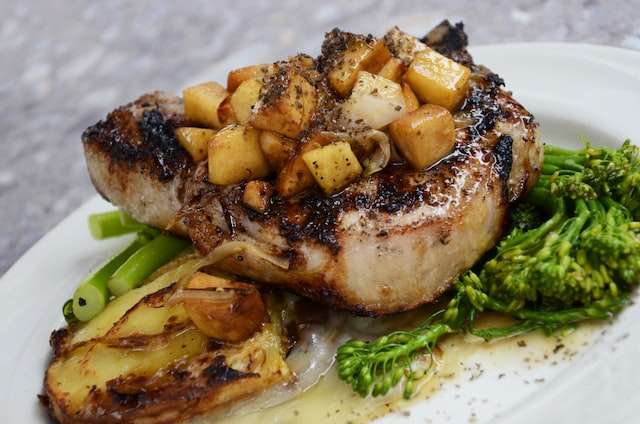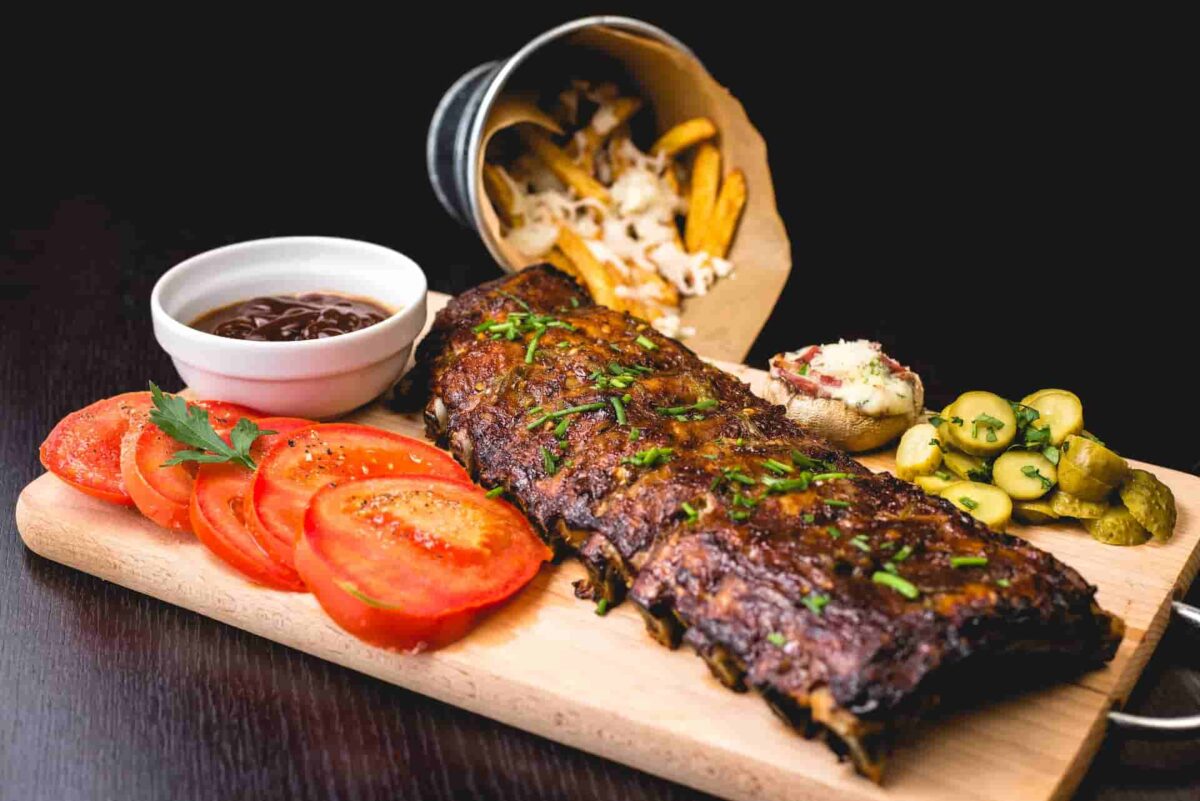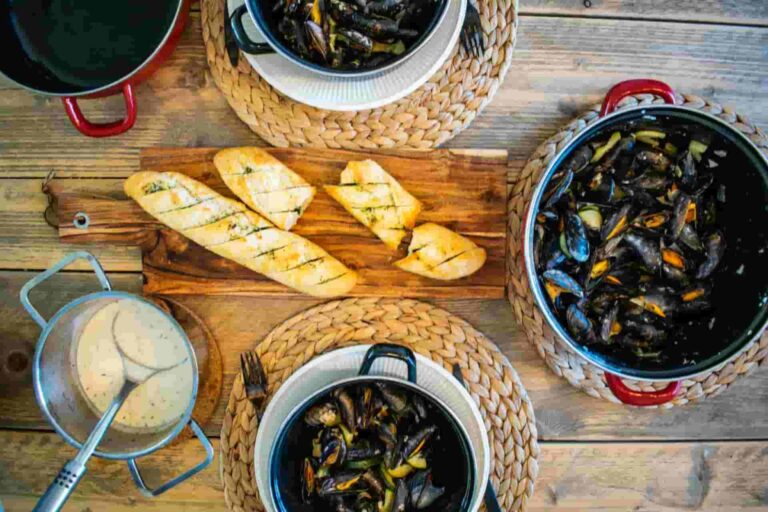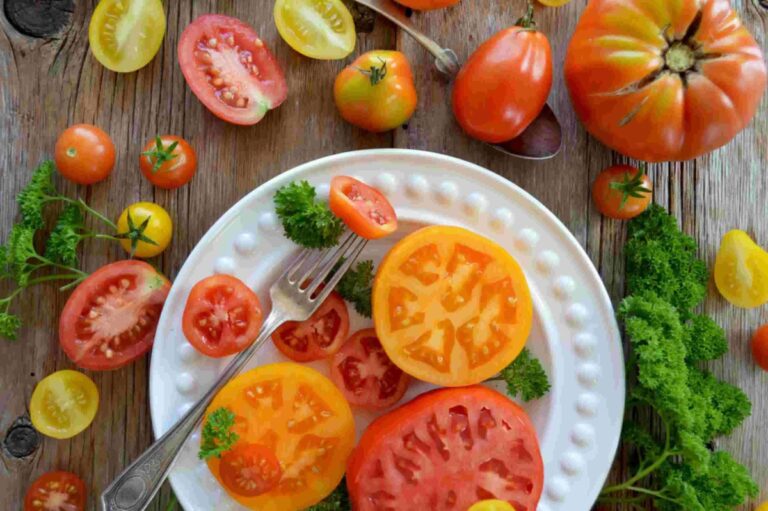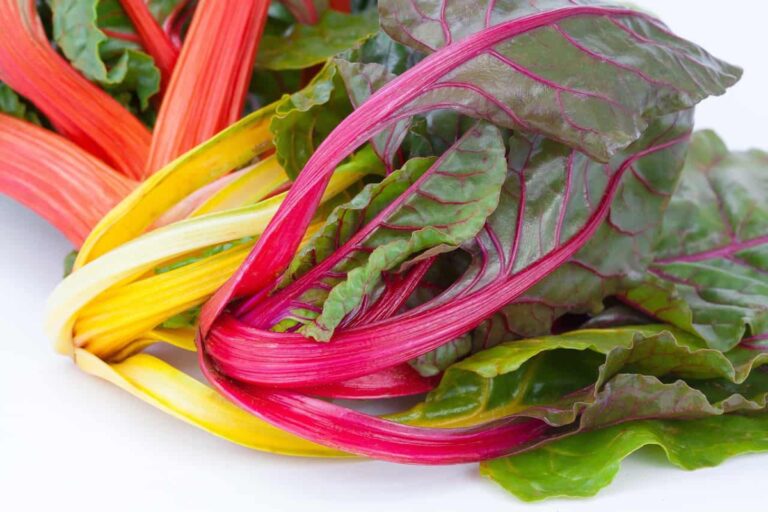33 free pork kitchen insights and benefits
Did you know that pork makes up forty percent of the total amount of meat consumed throughout the world?
- In the Western world and in Central Europe, pork is the most common kind of meat, and it is also quite popular in the Eastern and non-Muslim sections of India, Southeast Asia (including Indochina, the Philippines, Singapore, and East Timor), and Malaysia. It is widely regarded in the cuisines of Asia, particularly China, due to the significant amount of fat it contains and the texture it has.
- Pigs make up a larger percentage of Denmark’s population than people do. The official national cuisine of Denmark is called “Stegt flaesk med persillesovs,” which literally translates to “crispy pork with parsley sauce.”
- Pigs are, contrary to popular belief, incredibly hygienic creatures. If given the opportunity, they will not defecate in the same areas where they sleep or feed since they consider themselves to be among of the cleanest animals in the area. Even piglets that have just been born will leave their resting regions to discharge themselves.
- Another term that often gets people confused is “sweating like a pig,” which is a misnomer since pigs can not really sweat. Pigs do not have a lot of sweat glands, therefore in order to stay cool, they like to roll about in the mud, sleep in it, and swim in it. Pigs who spend their time rolling in mud have an added benefit: their skin is less likely to get burnt as a result.

Pork nutrition values and health benefits
- Pork has a reputation for being harmful due to the fact that it is a red meat. On the other hand, it is an excellent source of a number of nutrients, not to mention high-quality protein. It is possible that, if consumed in moderation, it might be a beneficial component of a diet that is focused on health. Phosphorus, selenium, and thiamine are just some of the vitamins and minerals that may be found in abundance in pork.
- In contrast to other types of red meat, such as beef and lamb, pork actually has a higher concentration of thiamine, a B vitamin that is essential for a wide variety of body activities. Pork is an excellent source of the vitamins B6 and B12, both of which are necessary for normal brain and blood cell development and function. In addition to being a good source of iron, pork is also highly rich in heme iron, which is very quickly absorbed by the human digestive system and is present in red meats.
- Pork is an excellent source of several vitamins and minerals, including iron and zinc, that are necessary for the proper functioning of the body. Moreover, it is a rich source of protein of a very high grade. When added to your diet, pork that has been little processed, is lean, and has been properly cooked, you may get some advantages from doing so.
- Since pig contains high-quality proteins that are also full amino acids, it is an excellent source of material for the construction of new muscle. As we become older, we see a decrease in muscle mass, which may result in disorders such as sarcopenia, which is a severe form of muscular degeneration. Pork has a high-quality protein, which, when consumed as part of a healthy lifestyle that also includes regular exercise, may help to slow down or even reverse the effects of sarcopenia. Also, it might assist you in keeping the healthy muscular tissue that you presently possess.
- Carnosine is a molecule that may be formed in your body because to the presence of the amino acid beta-alanine, which is found in pork. Carnosine plays a vital role in how muscles work. Research has showed that taking high doses of beta-alanine supplements for a period of four to ten weeks may result in a 40–80% rise in the amount of carnosine found in the muscles of participants. In humans, having high amounts of carnosine has also been associated to having lower levels of tiredness and greater levels of muscular performance.
- Pork may be high in sodium and saturated fats, two items that should be avoided as part of a healthy diet. Pork can be rich in some vital vitamins and minerals, but it can also be high in salt and saturated fats. You should eat the leanest and least processed forms of pork you can find if you are trying to avoid saturated fats and/or are on a diet to reduce the amount of salt you consume owing to worries about your heart health.
- Keep in mind that the amount of fat that is in pork may change depending on how you cook it. Grilling, roasting, baking, or broiling are all excellent alternatives to frying food. It is in your best interest to steer clear of pig products like bacon that are high in fat. Choose alternatively kinds that are lower in fat, undergo less processing, and have a greater protein content.
- Consuming pork that has been improperly prepared or that is uncooked may lead to parasite diseases. The pig tapeworm, also known as Taenia solium, is a kind of intestinal parasite. The vast majority of the time, it does not pose any health risks; nevertheless, on rare occasions, it may result in a condition known as cysticercosis, which can lead to epilepsy. Always fully boil pork to protect yourself from parasite infections. Before serving, use a meat thermometer to confirm that the meat has reached an internal temperature high enough to eliminate all pathogens, including bacteria and parasites.
100g of pork has 242 calories (1012kj), 27g protein, 14g fat, and 0g carbs, including 0g fibre.
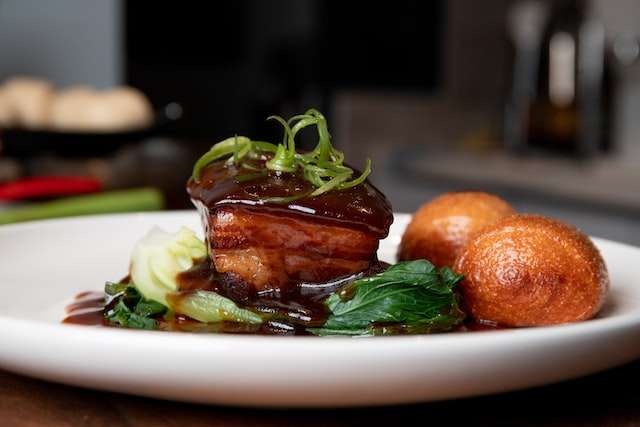
How to store pork cuts and how to buy them
- The meat that is sold at your neighbourhood butcher shop almost usually comes from a farm that is located in the immediate area. On the other hand, meat that is produced locally indicates that the distance travelled from the farm to the consumer’s plate is quite short, which results in the meat being extremely fresh. Butcher shops often purchase their goods on a much more intimate basis compared to grocery stores and other supermarkets. Because of this practise, high-quality meat is often produced, but the price is almost always going to be far more than that of pigs sold in retail outlets.
- If the package of porkmeat that you purchased has a sell-by date on it, the meat should remain edible for at least a day or two beyond the expiration of that date. In the event that there is no date, you may estimate that entire pieces of pork will be edible for up to 5 days, that ground pork will remain edible for 1 to 2 days, and that cooked pork and leftovers will remain edible for 3 to 4 days.
- In the event that the times specified are not sufficient for your requirements, your freezer is there to save the day. Either the raw pig meat or the cooked pork that has been left over after it has been eaten may be frozen. You may also create pig jerky out of it if it is a full cut.
- Whenever you arrive home, you should put any pork meat that you bought in the freezer if you do not have a meal plan for the next few days and you do not know when you are going to cook it. By doing it this way, you reduce the risk of discovering that it has gone bad after being stored in the refrigerator for a few of days.
- As you are inspecting your pork meat, keep the following in mind:
- It is a sign of poor quality for ground pork to be pale in colour, slimy to the touch, and smell rotten. When purchasing ground pork from the store, it is simple to evaluate the first two aspects of the product.
- It does not matter whether the pork is raw or cooked; if it begins to smell funny or if the colour starts to shift, throw it out.
- Throw away any pork that has been stored in the refrigerator for an excessive amount of time. Pork, particularly when it is uncooked, becomes rancid very rapidly. Assume that it has gone bad if the date on it has passed by two or more days, or if it has been stored in the refrigerator for more than a week. It is always better to be safe than sorry.
- The shelf life of pork is much less than that of chicken or beef. If you are unclear as to whether or not the one you have can still be consumed, it is best to err on the side of caution and dispose of it. Even though I am aware that meat is extremely pricey in today’s market, the danger of becoming sick from consuming it is never worth it.
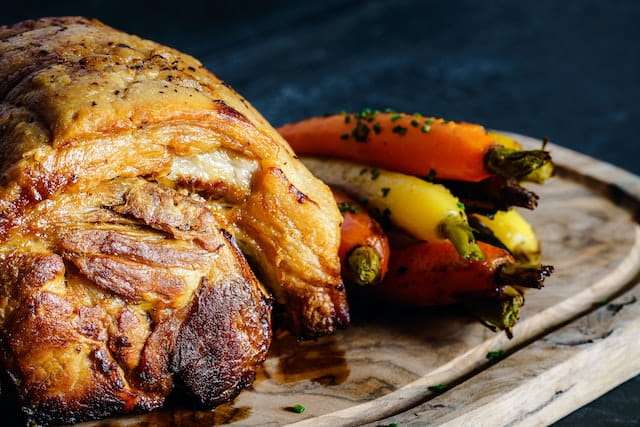
Cooking techniques, secrets, and tips from the kitchen
- There is edible meat on every part of the pig, from the snout to the tail. Understanding which way of cooking is most suited for each cut of pig is essential if one want to prepare pork successfully.
- While cooking pork, it is essential to remember that the meat should be well seasoned. The seasoning of the meat does not have to be limited to salt and pepper; instead, you may add flavour by using other ingredients such as herbs, spices, or brine.
- Check the doneness of the meat using a meat thermometer; the internal temperature of pork has to reach at least 660 degrees Celsius for it to be considered safe to consume. On the other hand, pork that is fully cooked yet retains its moisture is the norm rather than the exception.
- Pork, like the majority of other types of meat, should be allowed to come to room temperature before being cooked and should be allowed to rest for some time after being cooked.
- A rack of pork is synonymous with pork loin on the bone in certain circles. This is a highly flavourful joint that would be great for roasting since it has a nice covering of fat and skin as well as the bones. The fat keeps it moist, bones always add taste and you’ll have great crackling, too.
- This favourite cut of boneless meat, pork belly, is often served as a slab. For optimal results, it has to be cooked on high to start the fat flowing and for the skin to begin to crisp up, then moderate, slow cooking will tenderise the flesh and for most of the fat to liquify into the pan. Excellent recipes has the belly cooked on a bed of apples, onions and sage, served with a cider gravy, meltingly soft with a crisp crackling.
- A pork shoulder offers excellent value for the money and may be used to make a roast, pulled pork, or casseroles. Coming from the shoulder, it takes delicate cooking to tenderise it, but it’s absolutely worth the wait. Moreover, it contains a flavourful coating of fat that may be roasted whole and on the bone, or it can be boned out and filled before being roasted. Try a recipe for a Sicilian pork casserole, with all the tastes of the Med.
- Another cut that produces a roast that is wonderfully soft and has a crackling that is delightfully crispy is pork legs. Purchase it boned out from the butcher so that it would be easy to carve. It is also underutilised, which contributes to its low rating. It may be cooked on a low fire for a long period of time, or it can be roasted at a higher temperature.
- Pork chops are usually sliced from the loin of the animal and come either on or off the bone. They should be cooked quickly since being in the skillet or on the grill for an extended period of time may cause them to dry out. Our tea, which can be prepared in thirty minutes, combines them with apples, leeks, and a creamy wholegrain mustard sauce. It would go well with rice or mashed potatoes to sop up the delicious sauce.
- Whether they are grilled, roasted, or prepared with a sweet or spicy sauce, pork ribs are always a hit. If it hasn’t been removed, take off the thin membrane which sits over the bones, otherwise it will make them tough. The trick to cooking the ribs to perfection is to start out by cooking them slowly in order to guarantee that they are soft. After that, a crisp exterior may be achieved by grilling or baking the meat at a high temperature. A good method for sticky ribs involves marinating beforehand, but it’s incredibly simple with a purchased barbecue sauce.
- Pork tenderloin, or fillet, is a distinct cut than loin. Since it has very little fat and is extremely lean, it may be prepared in a short amount of time. It’s a long, thin cut which may be rapidly roasted whole, or utilised as fillets. The classic (and long) char Siu has been streamlined, but still has the trademark tastes of soy, ginger, garlic and hoisin to form the sticky sauce.
- The uses for ground pork are almost endless. Since it is often prepared from the shoulder, it has a tendency to be somewhat more fatty than beef mince. This ensures that it does not dry out and retains a lot of flavour. You may use it in your favourite meat loaf recipe by combining it with beef, or you can try our recipe for meatballs, in which it is mixed with smoky and spicy chorizo sausage in a rich tomato sauce. Despite the recipe utilises fresh tomatoes, swap with two cans of drained cherry tomatoes if you prefer.
- Let us put this matter to rest once and for all: Gammon is ham in its raw condition, then after it’s cooked, it’s ham. It is possible to brine, cure, or smoke the meat once it has been cut from the hind quarters. A gammon is often prepared for a holiday feast; nevertheless, it is a fantastic cut that can be enjoyed at any time of the year and provides a wide variety of uses for the leftovers.
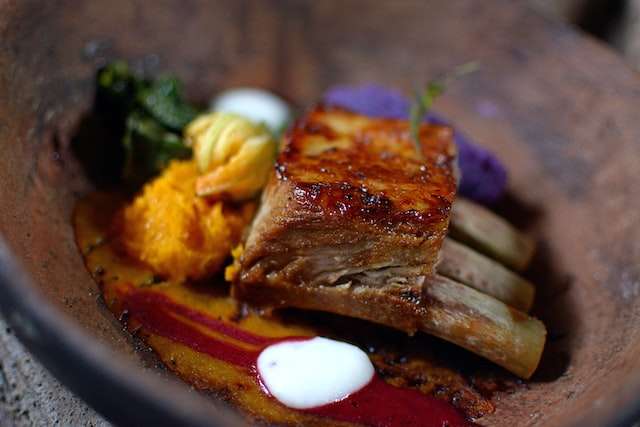
History of pork from the beginning until today
- In 13,000 B.C., Mesopotamia became the first region to domesticate pigs.
- Charcuterie is a sub-category of cookery that focuses on the preparation of cured meats, typically from pigs, such as bacon, ham, sausage, terrines, galantines, patés, and confit. Examples of charcuterie include bacon, ham, and sausage. These dishes, which were originally developed as a method for preserving meats before the invention of refrigeration, are now produced for the tastes that are generated from the techniques that are used to preserve the meat.
- Local guilds in 15th-century France were responsible for the regulation of merchants working in the food manufacturing business inside each city. The guilds of the charcutiers were responsible for the production of the charcuterie. The members of this guild were responsible for producing a customary assortment of cooked, salted, and dried meats, which differed from area to region and could occasionally be distinguished from one another. Unrendered fat was the only kind of “raw” beef that the charcutiers were permitted to offer to customers. The charcutier was responsible for preparing a wide variety of foods, such as head cheese, patés, rillettes, sausages, bacon, and pigs’ trotters.
- In Europe and North America, pork was traditionally considered an autumn dish prior to the mass production and re-engineering of pigs in the 20th century. This is because pigs and other livestock were brought to the slaughterhouse in the autumn following their growing and fattening seasons in the spring and summer, respectively.
- Since pig is a seasonal meat, apples, which are harvested in the late summer and autumn, have traditionally been considered the ideal food to pair with fresh pork throughout the history of Western cuisine. The fact that meat and fruits are readily available throughout the year has not prevented this combination from becoming a favourite on Western dinner plates.
